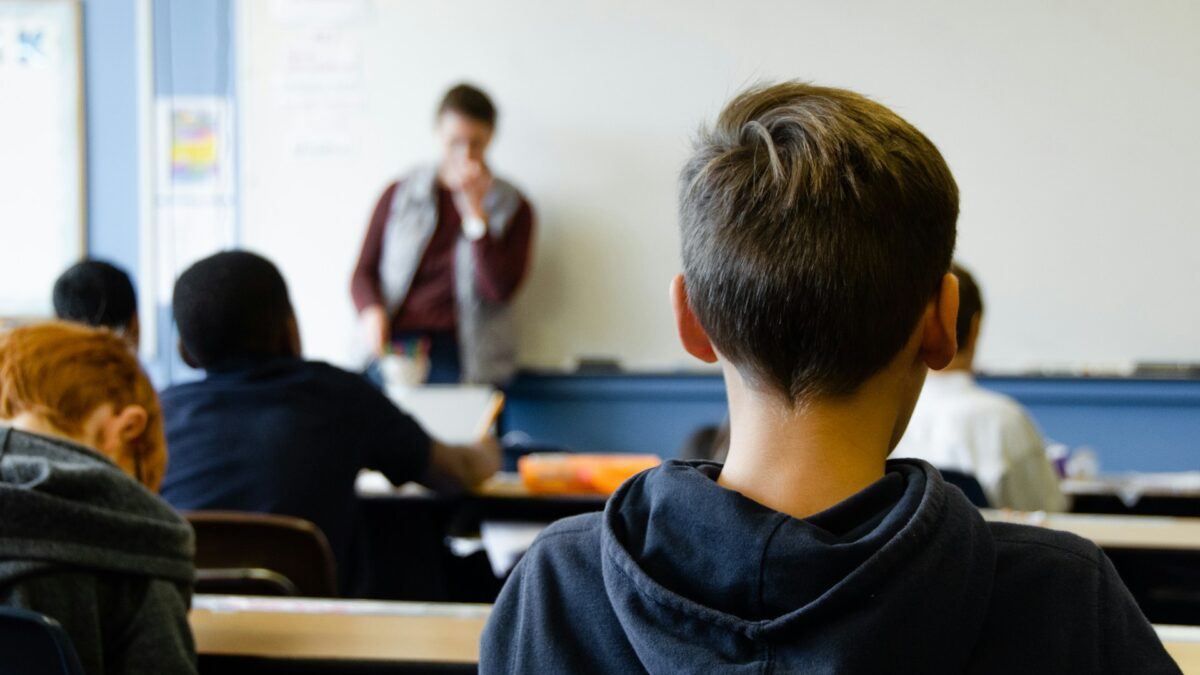Many education policymakers and equity advocates on the left have insisted that different educational outcomes among various racial and ethnic student groups are mainly due to demographic factors, such as race and socioeconomic status. But a new study has shown that culture, rather than demographics, is mainly responsible for “excellence gaps,” the disparities in advanced academic performance between different student groups.
Two researchers from the Thomas B. Fordham Institute, Meredith Coffey, Ph.D., and Adam Tyner, Ph.D., analyzed nearly two decades of assessment data from the National Assessment of Educational Progress (NAEP) on eighth-grade reading, math (from 2003 to 2022), and science (from 2009 to 2019). They defined “excellence” as students who earned “advanced” scores on math and readings of the NAEP assessment. They used the mother’s education as a proxy for the student’s socioeconomic status since the NAEP questionnaire collects such data by asking test-takers to select from the following options: “She did not finish high school,” “She graduated from high school,” “She had some education after high school,” “She graduated from college,” or “I don’t know” (the final group was excluded from the analyses).
Some of the study’s findings confirmed what was expected: Within the same racial or ethnic group, socioeconomic status correlates to education outcomes because the share of students achieving at the advanced level declines as socioeconomic status decreases. For example, the percentage of black students who scored “Advanced” in math dropped from 3 percent of the highest socioeconomic status (mothers who graduated from college) to 0.5 percent of the lowest socioeconomic status (mothers who didn’t finish high school). Across racial groups, black students of the highest socioeconomic status outperformed lowest-socioeconomic-status white students whose mothers didn’t finish high school (2.5 percent) in math.
But data from Asian American and Pacific Islander (AAPI) students presented a different picture. We already knew that Asian students outperformed all racial groups overall. But the Fordham researchers found that in math, 13 percent of the lowest-socioeconomic status AAPI students (mothers didn’t graduate from high school) achieved the Advanced level, outperforming the highest-socioeconomic status black (3 percent) and Hispanic students (6.8 percent), surpassed only by the highest-socioeconomic status white students (16.3 percent) and Asian students of higher socioeconomic status. Reading scores demonstrate a similar pattern, suggesting that poor social and economic conditions are not necessarily barriers to academic achievement.
Further, the study revealed that racial/ethnic excellence gaps within the highest-socioeconomic status group (college-educated mothers) are much wider than those in the lowest-socioeconomic status group (mothers who didn’t graduate from high school). For example, the gap between AAPI and black students whose mothers graduated from college is 14.5 percentage points. Meanwhile, “for the two lowest SES groups, the white-black and white-Hispanic excellence gaps are small, ranging from 0.3 to 2.0 percentage points. The researchers were surprised that wealth doesn’t always guarantee better education outcomes because “fewer black and Hispanic students from the highest-SES group (those with college-educated mothers) are achieving at advanced levels than we would expect given their socioeconomic status.”
The study also finds that advanced achievement for all racial/ethnic and socioeconomic status groups has been trending higher between 2000 and 2019, and the most significant improvement came from Asian and Hispanic students. For example, the percentage of students scoring at the advanced level in math increased 100 percent from 2003 to 2022 for Hispanic students and 92 percent for Asian students. However, the trend was reversed in the last three years, and advanced math and reading achievement dropped for all racial/ethnic groups, likely due to extended school closures and ineffective remote learning during the Covid-19 pandemic.
Based on their findings, the researchers recommended policymakers and practitioners take steps to boost advanced achievement for all student groups while narrowing excellence gaps. Interestingly, some recommendations contradict policies popularized by the woke left in the name of “equity.” For example, woke school boards and politicians have been getting rid of gifted and talented programs at K–12 schools nationwide, claiming such programs are exacerbating the school system’s already stark racial and economic segregation. But based on their study, the researchers at Fordham suggest that “making sure that every elementary school in the country, including high-poverty Title I schools, has a robust gifted program in place should dramatically increase the number of black, Hispanic, and lower-SES students entering the pipeline of advanced learning opportunities.”
Drawing from AAPI students’ academic success, especially those from the lowest SES, the researchers recommend: “We need to learn from the success of AAPI students and their families—not be threatened by it or seek to depress their chances of gaining admission to prestigious institutions,” a subtle swipe at the woke left’s ongoing efforts to limit Asian students enrollment at some of the nation’s most selective high schools and elite colleges to achieve so-called “diversity” and “equity.” Rather than insisting “there are too many Asian students” in certain programs and education institutions, the researchers suggest, “At the national, state, and local levels, policymakers and educators should ask: Are there observable practices among Asian students that could apply more broadly?”
The researchers didn’t go into any details about what these observable practices are. As an Asian American, I can attest that cultural factors have significantly impacted Asian students’ overall academic success. Asian American cultures place high values on work ethics and learning. Parents instill in their children from a young age that education is their only path to social and economic mobility. Thus, most Asian students are motivated to work hard and get good grades at school. They are more likely to take advanced classes and participate in academic competitions. Asian parents, even those less educated and struggling economically, generally foster a supportive learning environment at home and are willing to back their children’s learning needs with all the resources they can muster because they regard money spent on their children’s education as the best investment.
But the most important aspect of Asian American culture is the emphasis on family and marriage. Eighty-two percent of Asian and Pacific Islander children under 18 in the U.S. live with both of their parents, while only 34 percent of black children live in a two-parent household. Plenty of research has shown that regardless of race and parents’ education attainment, “children are significantly more likely to avoid poverty and prison and to graduate from college if they are raised in an intact two-parent family. In his book, Agency, educator Ian Rowe wrote, “If we truly want to improve outcomes for children, we must have the moral courage to measure student achievement outcomes by family structure groups as routinely as we already do by race, class, and gender. We must overcome our inattentional— or perhaps intentional — blindness.”
The left’s obsession with using race and wealth to explain away disparity in education outcomes and their equity-driven policies, from canceling the gifted and talented programs to delaying teaching algebra, have only widened achievement gaps among students of different racial and ethnic groups, hurting black and Hispanic students while unfairly penalizing high-achieving Asian students. The Fordham study is a reminder that anyone who is serious about narrowing the achievement gap may want to learn from the Asian community and apply cultural practices such as valuing marriage, hard work, and learning in their families and communities.









